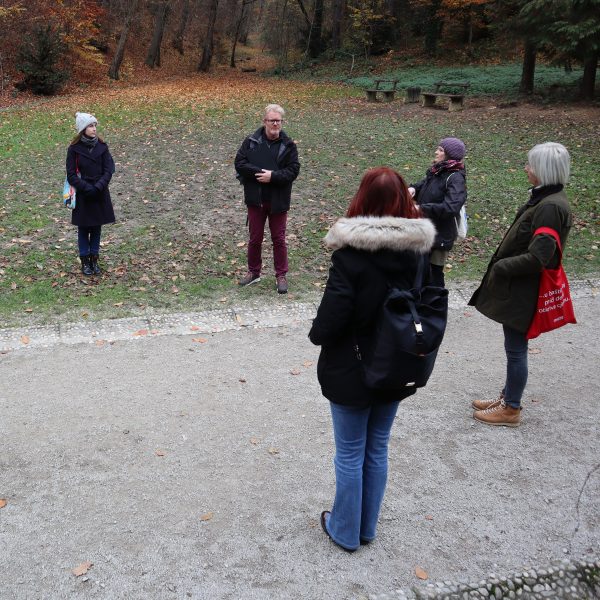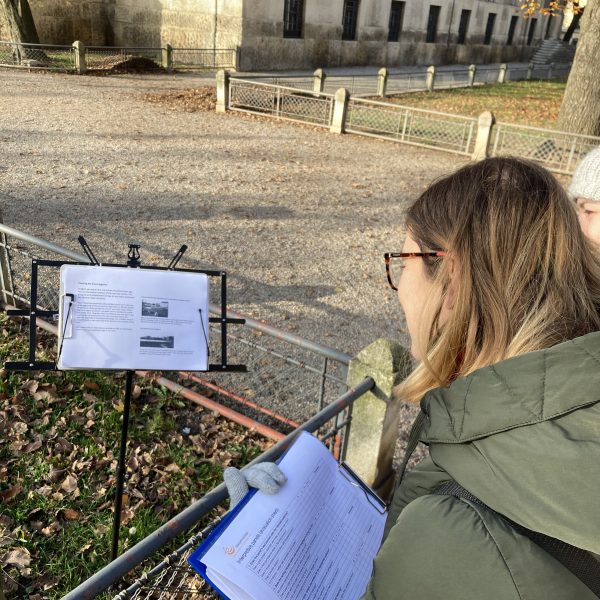Croatia’s first CIW course enriched my knowledge and made me see that writing is the most challenging skill to master as a heritage interpreter.
Writing to inspire and connect with the reader is a continuous process of capturing the essence of cultural and natural heritage. As our trainer, Sandy Colvine, pointed out, the written word differs from face-to-face interpretation because it is static and can be less spontaneous and memorable. You can overcome these initial obstacles with Tilden’s interpretive principles and essential tools, which we got to grips with during the recent 40-hour course in Zagreb. Over five days, our creative group of participants tested out key elements of interpretive writing through a range of engaging exercises. It was eye-opening. Creating a coherent text that was not only easy to understand but engaging enough to provoke an emotional reaction was a challenge.
A stimulating experience
All of the eight participants on the course were, in some way or another, seasoned heritage interpreters. I was also lucky to be part of this process with all of my team from Muses Ltd, forming a collective with many years of creating unique heritage experiences all over the country. Our training was closely tied to different heritage phenomena, enabling us to learn and perfect our knowledge about strong themes, connected topics and key universal values. There was a lot of fun and laughter along the way and we were constantly positively surprised by the creative solutions from other participants, which further inspired me to think outside of the box.
The course challenged us in approaching different written media, including museum labels, outdoor panels and self-guided walk leaflets. Immersion in interpretive techniques took us to various heritage sites, such as city parks and squares and to visitor attractions like the Nikola Tesla Technical Museum in Zagreb where we spent the day creating audio scripts for permanent and temporary exhibits. We were ambitious, supportive and appreciative of each other and while we all struggled from time to time to implement all the tools and guidelines we learned, I cherish all of our thought-provoking discussions that gave me crucial input and clear objectives for my next interpretive writing task.
When to write next?
In our inventive Muses laboratory, I’m passionate about shaping heritage stories while frequently using the written word. Creating a powerful story, be it for promotional purposes or museum-based documentation is an important process summarising and conveying the shared values. Ittakes time and skill. Even our social media content resembles an interpretive text, organised hierarchically and shared as a brief but powerful and inviting soundbite. This creative and stimulating course gave me important tools to continue perfecting my skills while always listening to readers’ interests. Although after the training I now grasp the complexity of interpretive writing techniques, I believe that, like the other participants, I am one step closer to perfection.
Meri Vesanović is the youngest member of the Muses team. She is an Art Historian and professor of Italian language and literature but excels in the dynamic world of social networks, new technologies and cultural management. Creating strong heritage stories is her passion and her current occupation as cultural manager for public relations and EU funds in culture and tourism. Meri can be contacted at: info@muze.hr.
To cite this article: Vesanović, Meri (2021) ‘Words that are worth reading’ in Interpret Europe Newsletter 4-2021, pg.14
Available online: https://interpret-europe.net/wp-content/uploads/2021/12/Newsletter-Winter-2021.pdf






